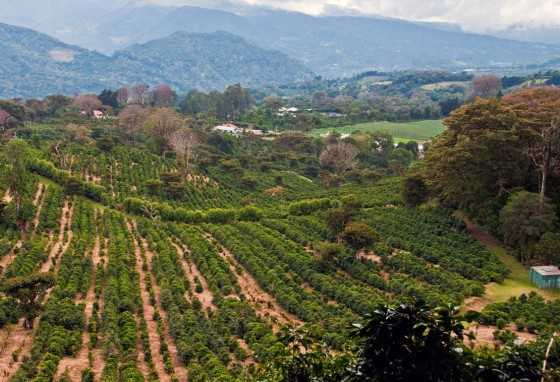PORTLAND, U.S. – US wine industry folks talk about terroir a lot. A core concept in how we view wine in the 21st century, terroir is the idea that soil, climate, and topography all give a wine a distinctive characteristic that it wouldn’t have if the grapes were grown elsewhere.
It’s an idea that posits the locale where grapes are grown as one of the more important elements in a wine, and what sets it apart from others.
Not everyone believes in the concept, though.
There have been some notable skeptics, like Joseph Bohling, an assistant professor at Portland State University, who told Portland Monthly that terroir is nothing more than a successful marketing campaign by French wine producers concerned about New World wines encroaching on their territory.
Still, it’s a concept so crucial to the way we think about wine that one day, while drinking my morning coffee and tasting a decided blueberry note, I began to wonder whether coffee, too, has terroir.
After all, coffee beans are a lot like grapes, grown in a particular region and subject to its climate and soil conditions. Is it possible that coffee, like wine, expresses terroir?
“Absolutely,” says Greg Zamfotis, proprietor of Gregorys Coffee, a New York staple for artisanal brew with 20 Manhattan locations, two New Jersey spots, and a recently opened Brooklyn Heights joint. “It probably mirrors what you would speak about when it comes to terroir in wine.”
Coffee grows on trees, Zamfotis explains, and trees take attributes from the soil they grown on, which translates to the fruit they produce.
The fruit of coffee-producing trees is referred to as cherries, and coffee beans are the seed of the cherries. Beans — known as “green coffee” — are removed from cherries through dry processing in sun or soaking in water.
Just like terroir is manifested in grapes, the fruit of vines, which then ferment and become the terroir-driven wine in your glass, coffee beans — also a tree-fruit, which are picked and roasted and become the brew in your morning travel mug – also reflect the place they come from. “Terroir is a real thing, especially in coffee,” Zamfotis tells me.
It’s not just coffee sellers who believe that coffee has terroir, either. In May 2015, Luis Alvarez Welchez, a dual expert on soil management and coffee production, told Daily Coffee News that coffee’s quality is very dependent on the soil in which it is grown.
“Coffee quality depends on a combination of the right balance of nutrients found in the soil and a plant’s altitude,” Welchez said.
“The plant’s health, determined by how well it is nourished through the soil, has a direct effect on the coffee’s body, flavor, and aroma. Higher altitudes (and cooler temperatures) lead to slower photosynthesis that allows plants to metabolize nutrients more gradually and hence produce bigger and better beans.”
When Welchez speaks of coffee growing conditions and how they affect the taste of the beverage, it sounds a lot like winemakers talking about ideal grape-growing conditions.
And Welchez is not alone.
In his book Coffee: Growing, Processing Sustainable Production, agronomist Jean N. Wintgens writes that several factors influence the flavor of brewed coffee, including temperature, elevation, latitude, rainfall, the nutrient content of the soil (nitrogen, calcium, and potassium), the crop load, the genetics, and the cherry stage of maturity, just for starters.
There’s also the amount and quality of the water that the tree has been exposed to. These are all factors that affect the terroir of grapes, too.
And just like with grapes, coffee beans have stereotypical flavors associated with the different growing locales.
“With Brazil, there’s a peanut-chocolate stereotype, but you’ll also find plenty of coffee that comes out Brazil that has very different profiles,” Zamfotis explains. This immediately reminds me of Argentinian Malbec and the strong violet flavors we almost always associate with the grape.
“Eastern Africa, definitely Kenya, is known for citrus, lime, and bright acidic flavors,” Zamfotis continues. “Ethiopia, for very blueberry, strawberry, bright, vibrant, and fruity notes.”
This is a language I know from wine. The acidic coffee flavors from Kenya are similar to what you’d expect to be reflected in a Sauvignon Blanc grown in New Zealand terroir, while the fruit-forward Ethiopian flavors sound a lot like those of a Merlot expressing California terroir.
Dr. H.C. “Skip” Bittenbender, a professor and Extension Specialist for Coffee, Kava, and Cacao at the University of Hawaii, also believes very solidly in the terroir of coffee. Bittenbender ran a five-year trial of 15 Arabica varieties in locations from warm to cool across the Hawaiian Islands.
What he found was surprising: Terroir had a stronger effect on the coffee than genetics. In other words, where the coffee was grown influenced its taste more than the variety of coffee.
Cooler, wetter locations produced more acid than warmer, drier locations, whereas warmer locations produced more “cup body.”
In other words, climate conditions were more strongly reflected in the final cup of coffee than the basic variety of bean used to make it. This means that, according to Bittenbender’s research, terroir in coffee is just as strongly expressed in the cup as it is with wine, validating my Wednesday morning blueberry-noted coffee experience.
For wine drinkers skeptical of terroir, I’d recommend drinking a cup of coffee. What you’re tasting in your mug is the thing you deny exists in your glass.
Vicki Denig










